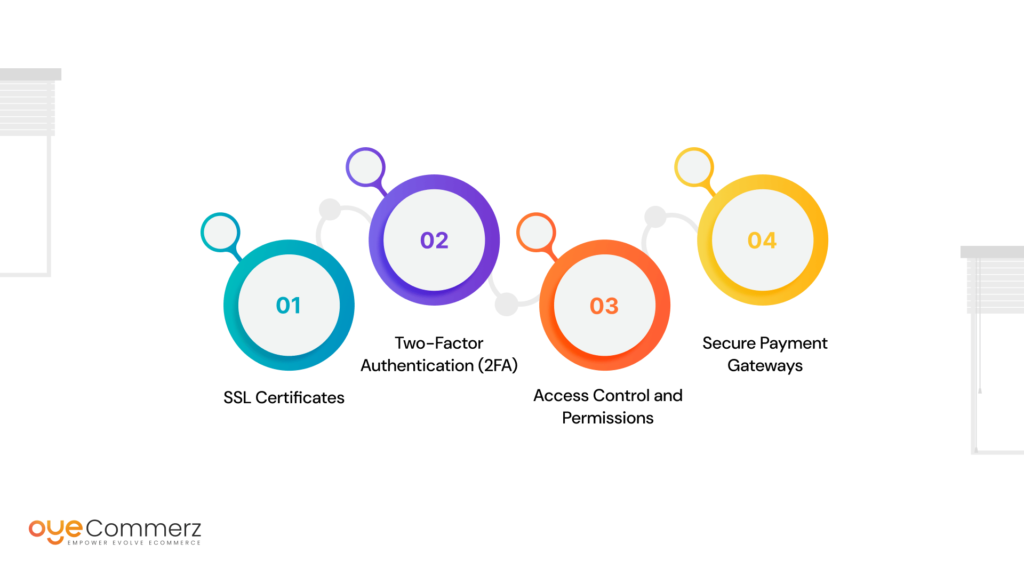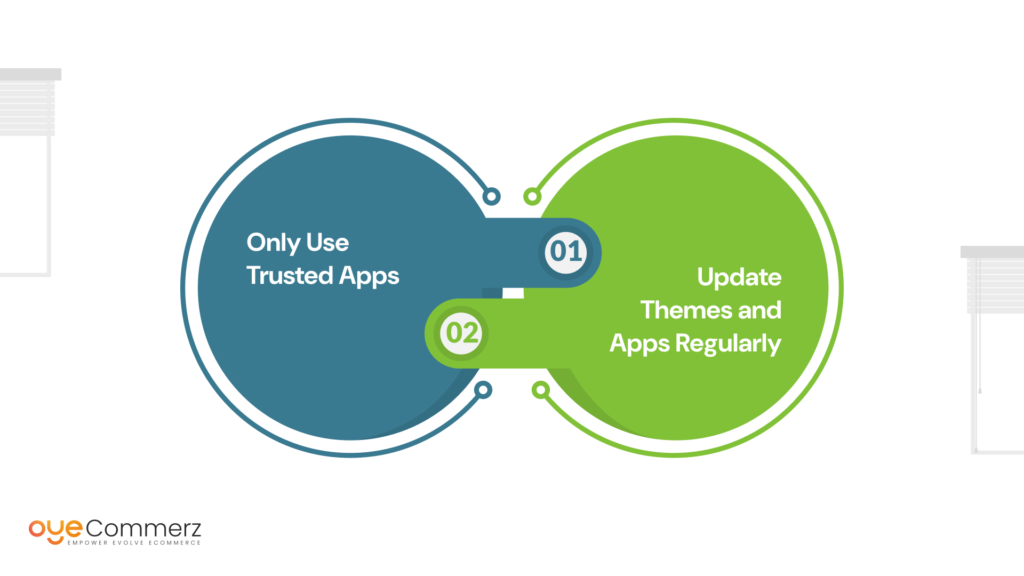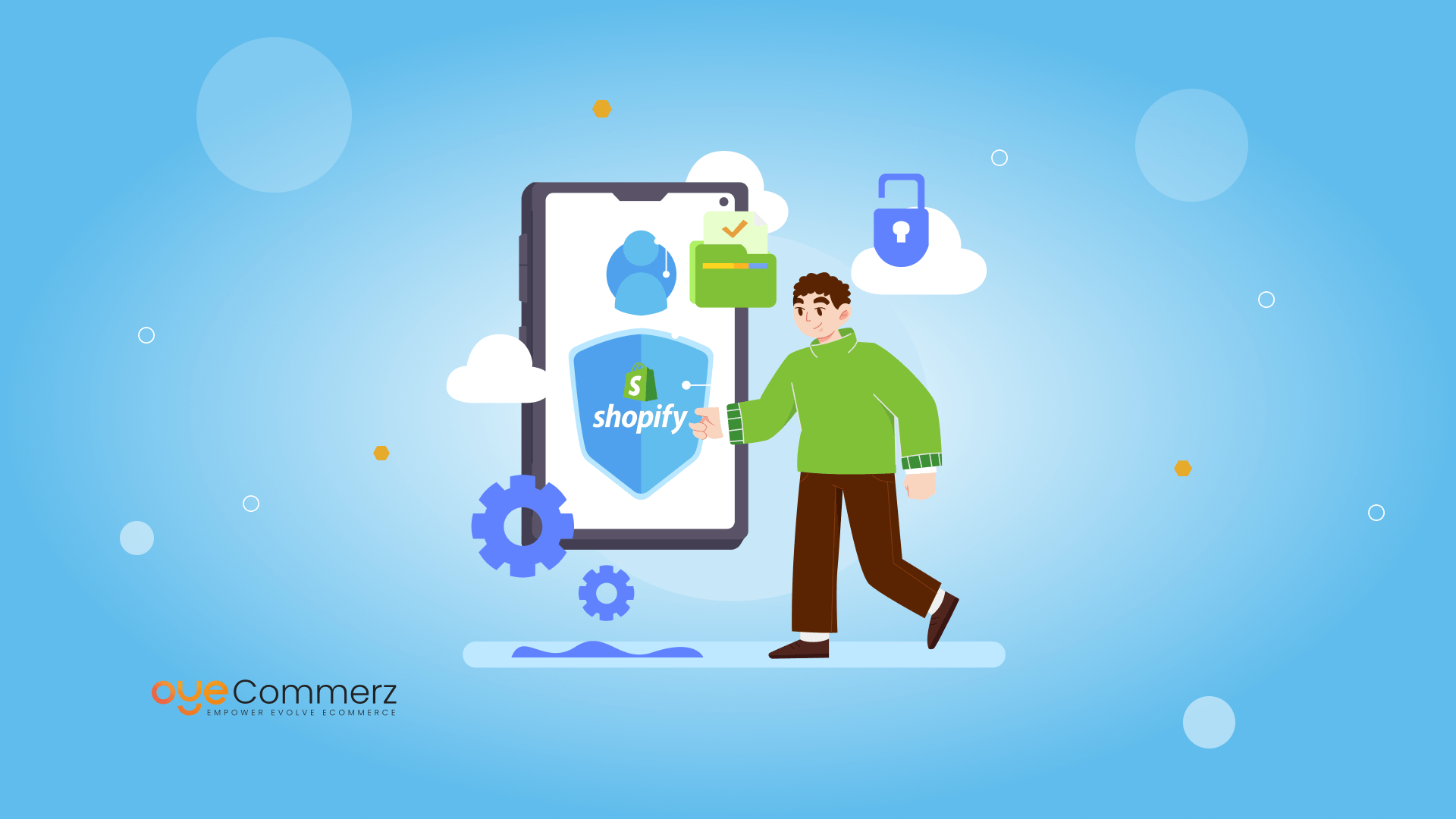In today’s rapidly evolving digital landscape, eCommerce security is paramount. As Shopify continues to dominate the world of online retail, securing your store should be your top priority. Cyber-attacks, data breaches, and fraud can lead to financial losses, reputational damage, and customer distrust. Shopify store security isn’t a one-time task but a continuous process that requires vigilant updating and monitoring. Strengthen your Shopify Store with security updates by adopting best practices, you can ensure that your store remains safe from emerging threats.
Table of Contents
ToggleWhy Security Updates Are Crucial for Your Shopify Store
Hackers are continuously looking for new vulnerabilities in online platforms. Shopify, while robust and secure, is not exempt from potential threats. Security updates provide vital protection against new security vulnerabilities, malware, and other threats. Without these updates, your store could be exposed to cybercriminals, leading to compromised data, loss of revenue, and even legal implications if customer information is stolen.
Regular security updates are essential for:
- Patching Vulnerabilities: As cyber threats evolve, new vulnerabilities are discovered. Security updates ensure these vulnerabilities are patched before they can be exploited.
- Improved Functionality: Many security updates not only protect your store but also optimize performance and fix bugs, ensuring a smoother user experience.
- Compliance with Regulations: Failing to maintain a secure environment may result in non-compliance with regulations such as GDPR, leading to fines and penalties.
Key Shopify Security Features and How to Maximize Them

Shopify offers a range of built-in security features that, when utilized correctly, can significantly enhance your store’s protection. Here are some key features and how you can maximize their potential:
1. SSL Certificates
Shopify automatically provides SSL certificates for all online stores, ensuring encrypted communication between your website and its visitors. SSL not only protects sensitive customer data, such as credit card information, but also boosts your SEO by signaling to Google that your site is secure.
Action Steps:
- Always ensure your SSL certificate is active. Regularly check for any warnings or notifications indicating that your SSL may be inactive.
- Include an SSL badge on your store’s pages to increase customer trust and reassure them that their data is protected.
2. Two-Factor Authentication (2FA)
Two-factor authentication (2FA) adds an extra layer of security for your Shopify admin account by requiring a second form of verification in addition to your password. This greatly reduces the likelihood of unauthorized access.
Action Steps:
- Enable 2FA for all users with access to your Shopify admin, including developers and staff.
- Encourage your team to use authenticator apps instead of SMS-based 2FA, as these apps provide better security.
3. Access Control and Permissions
Not everyone in your organization needs full access to your Shopify admin panel. Shopify allows you to assign specific roles and permissions, ensuring that employees only have access to the areas they need.
Action Steps:
- Review and update permissions regularly to ensure that access is restricted to only necessary individuals.
- Remove access for former employees or contractors as soon as they leave the organization.
4. Secure Payment Gateways
Shopify’s built-in payment gateway, Shopify Payments, is PCI DSS compliant, ensuring that your store meets the highest security standards. Additionally, Shopify supports various secure third-party gateways such as PayPal and Stripe.
Action Steps:
- Always use PCI-compliant payment gateways.
- Regularly monitor transaction activity and set up fraud detection tools to prevent chargebacks and fraudulent orders.
Related Read: Essential Shopify Store Maintenance Tips
Keeping Your Shopify Apps and Themes Secure

Apps and themes are essential for expanding the functionality and design of your Shopify store. However, they can also pose security risks if not properly vetted or regularly updated.
1. Only Use Trusted Apps
Shopify’s App Store is filled with useful tools, but not all apps are created equal. Some may have vulnerabilities that could compromise your store’s security.
Action Steps:
- Only install apps from trusted developers with positive reviews and a solid history of updates.
- Regularly review the apps installed on your store and remove any that are no longer necessary.
2. Update Themes and Apps Regularly
Outdated themes and apps can be breeding grounds for vulnerabilities. Developers frequently release updates that fix security issues, improve functionality, and ensure compatibility with Shopify’s latest updates.
Action Steps:
- Regularly check for updates to your apps and themes, and install them immediately.
- Consider using custom themes or apps from trusted developers to minimize the risk of vulnerabilities.
Implementing a Shopify Backup Plan
Although Shopify automatically handles server backups, you should implement a manual backup strategy to protect your store’s data. In the event of a cyber-attack, accidental deletion, or theme issue, having a recent backup can prevent major losses.
1. Use Backup Apps
Shopify’s platform does not provide an automatic backup feature for store data like products, themes, and customer information. Backup apps like Rewind or Shopify Backup allow you to schedule regular backups of your store.
Action Steps:
- Install a backup app and configure it to automatically back up your store on a daily or weekly basis.
- Store backups in a secure, external location to prevent data loss in the event of a system-wide issue.
2. Export Data Regularly
As an extra precaution, you should regularly export key store data such as products, customer information, and order history.
Action Steps:
- Schedule regular exports of your customer and order data.
- Ensure exported files are securely stored and encrypted if necessary.
Monitoring and Logging for Security
Shopify provides various tools to monitor and log activity within your store, allowing you to quickly detect and respond to any suspicious activity.
1. Activity Logging
Shopify activity logs track admin and customer activity, helping you identify unusual behavior such as multiple failed login attempts or unexpected changes to your store settings.
Action Steps:
- Regularly review your store’s activity logs for any signs of unauthorized access or unusual behavior.
- Set up notifications for key activities, such as password changes or new app installations.
2. Monitoring Traffic and Orders
Regularly monitoring traffic spikes and order patterns can help you detect fraudulent activities like bot traffic or unusual order patterns.
Action Steps:
- Use Shopify’s built-in analytics and third-party tools like Google Analytics to monitor traffic for suspicious activity.
- Investigate and flag any unusual orders or chargeback trends to mitigate potential fraud.
Also Read: Shopify Ticket-Based Support: Track Your Store’s Issues Efficiently
The Importance of Customer Trust and Security Transparency
Customers need to trust that their data is secure when shopping online. Shopify provides multiple ways to communicate security practices to your customers, which can enhance trust and increase conversion rates.
Action Steps:
- Clearly state your privacy policy and security measures on your website.
- Implement trust badges and visual cues like SSL certification and secure payment icons to reassure customers.
Why Trust Oyecommerz for Your Shopify Maintenance Needs?
Oyecommerz specializes in Shopify website maintenance tailored to your business’s unique needs. We ensure your store remains optimized with regular theme updates, app support, and performance tuning. Our team offers fast, proactive problem-solving and comprehensive email and 24/7 support, so you can focus on growing your business while we keep your store running at its best.
Contact to Migrate your Site to Shopify Now
Conclusion
By making security updates a top priority and sticking to proven best practices, you can greatly lower the chances of cyberattacks and provide a safe environment for your customers to shop. Keeping your store updated, constantly monitoring for potential risks, and using reliable security tools are all crucial steps in protecting your Shopify store from threats. These efforts help ensure that both your business and your customers’ information stay secure.




